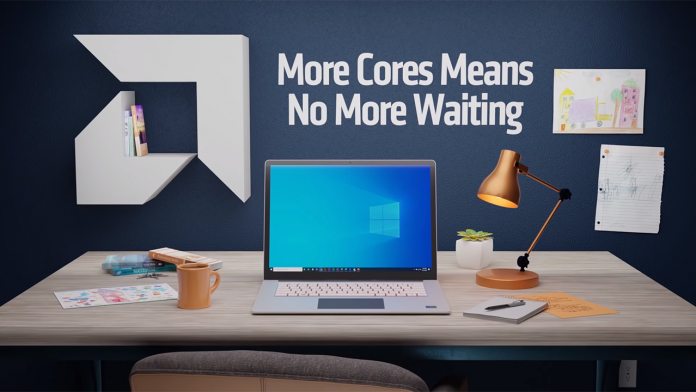They’ll feature a U-series for ultrathin laptops, an H series for gaming and creations, and a Pro-series for ultra-thin professionals. In that U series is the flagship Ryzen 7 4800U, a 9 core 16 thread chip with a 1.8 GHz base clock and up to 4.2 GHz boost. It also holds 8 Radeon cores, which have been upgraded for 59% more performance. In real-world benchmarks, AMD claims this led to a 90% increase in multi-thread Cinebench R20 performance vs Intel’s i7-1065G7 and 4% in single-thread. In terms of graphics, its testing saw a 28% performance increase in 3DMark Time Spy Extreme. Of course, these kind of benchmarks are usually the best-case scenario and can be weighted to favor Ryzen. Power draw is a little more black and white, though, and AMD is promising that its 3rd Gen mobile processors have double the performance per watt in Cinebench.
The 45W H-Series
The 4800U is available announced for Lenovo’s Yoga Slim 7, and AMD is promising dozens of OEM laptops with it in Q1. On the H-series side, AMD announced the flagship Ryzen 7 4800H, with 8C/12T at a base of 2.9 GHz and a boost of up to 4.2. This and the others in the H lineup will be 45W chips, rather than the 15W of the U-series. It’ll also be offering slower variants of both lines: Meanwhile, the company appears to be making progress on its integrated graphics offerings vs Intel. Though its U line has fewer compute cores than last-gen, it claims the 4800U will still beat Intel in many games. Rocket League it says runs at 110fps at low settings vs Intel’s 80, while GTA V jumps from a barely playable 29 to a solid 53. If AMD’s marketing is to be believed, things are looking very positive for the company. It’s gone from being trounced by Intel processors 5 years ago to having a highly competitive product stack across desktop, laptop, and consoles. Let’s just hope that battery life holds up on the go.




